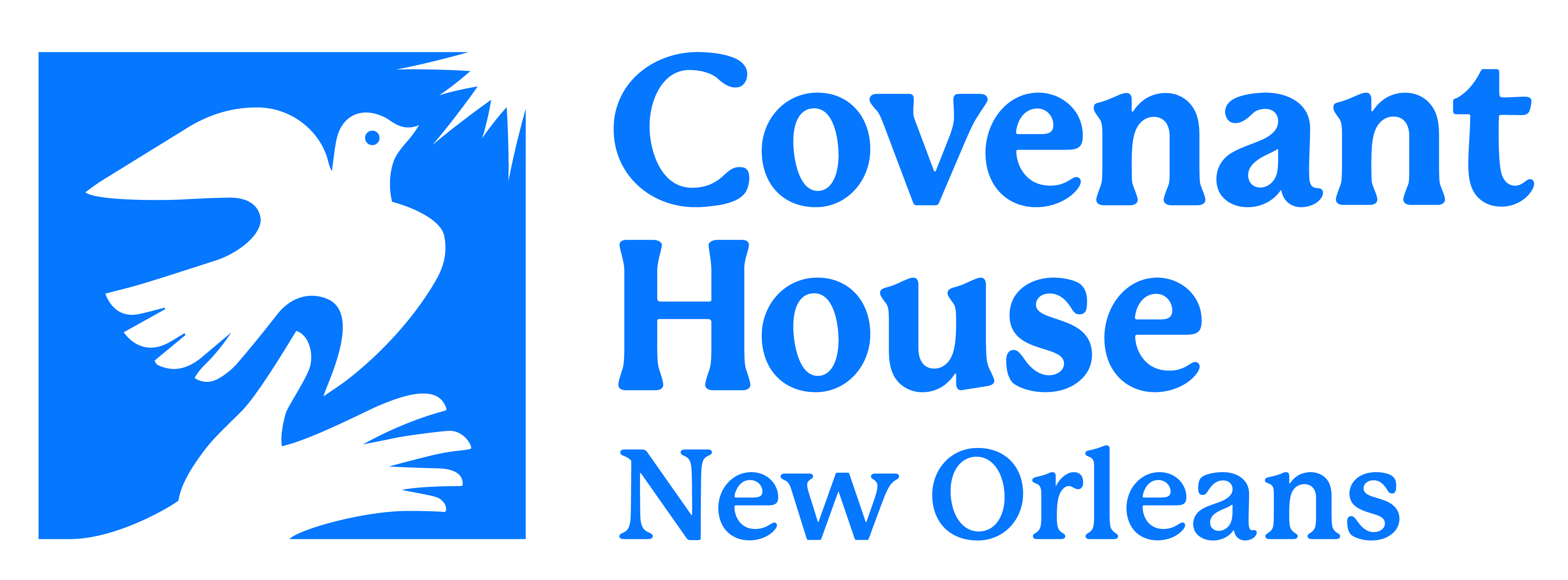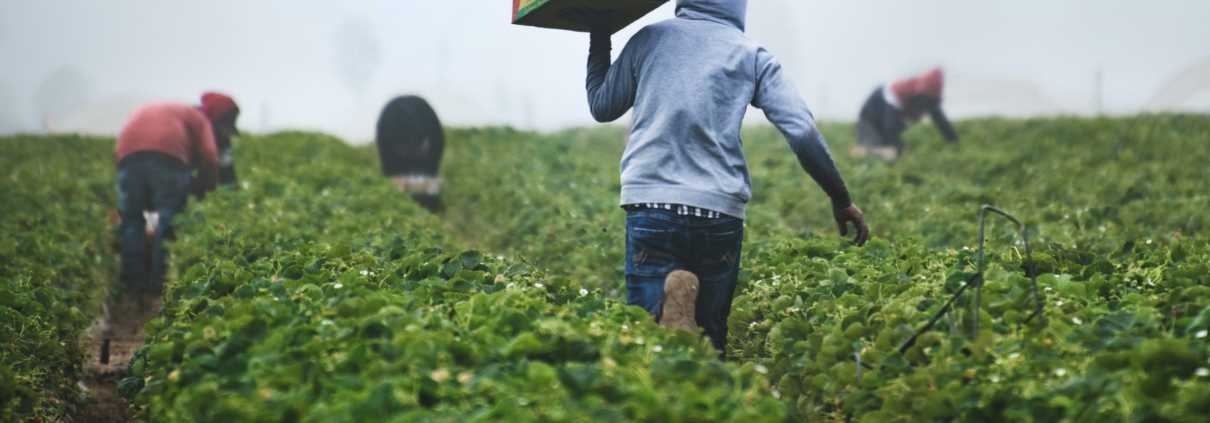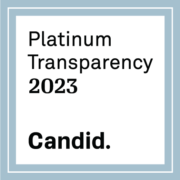Lugine Gray from the Louisiana Child and Youth Trafficking Collaborative spoke with Covenant House about human trafficking topics that don’t get as much attention: labor trafficking and male survivors.
Stand against Human Trafficking with Covenant House
Traffickers use violence, threats, deception and other manipulative tactics to trap youth in horrific situations every day. They often target the most vulnerable population: youth facing homelessness.
Each year, traffickers generate more than $150 billion in profits by victimizing millions of people worldwide. Children and youth experiencing homelessness are a prime target of this criminal industry.
Why do human traffickers target youth facing homelessness?
Because of their vulnerability, children and youth with no place to call home and no one to care for them make easy prey for traffickers. They are therefore relatively easy to lure from the streets with promises of love, protection, food, and financial security.
It isn’t long, though, before traffickers show their true intentions. At Covenant House, we witness firsthand the physical, emotional, and psychological toll human trafficking takes on these young victims.
What Else Do We Know About Human Trafficking Among Children and Teens?
- Most human trafficking victims are not in chains. Instead, traffickers may use psychological and emotional coercion that is just as effective. Many trafficking survivors traumatically bond to their traffickers; despite enduring horrific violence, they believe their traffickers love them.
- Traffickers may also exert control. Tactics include giving youth drugs to create dependency, confiscating their identification and money, withholding food or sleep, and isolating victims from their families and friends.
- Human traffickers exploit the lack of available beds in youth shelters. They manipulate young people by telling them that shelters are full and promising them a soft bed elsewhere.
- Young people facing homelessness may have to decide between sleeping on the street or going with a trafficker who offers them food and shelter.
- According to U.S. federal law, there is no such thing as a “child prostitute.” Any child under age 18 engaging in commercial sex is, by law, a victim of sex trafficking. Despite this, far too many children do not know how to escape the vicious cycle.
- If a person is forced to engage in sex for money against their will at any time, whether through threats, coercion, or physical violence, that person is a human trafficking survivor, regardless of age or initial consent.
- While current systems most often detect women and girls as survivors of sex trafficking, men and boys fall victim to trafficking, too. The exact number of trafficked boys is unknown, and boys are often less likely to ask for help.
- LGBTQ+ youth experiencing homelessness are at especially high risk for human trafficking.
- Traffickers deny their victims independence, education, and the ability to gain employment skills. As a result, human trafficking survivors feel increased desperation.
- If societies want to fight human trafficking, they cannot afford to cut services for young people experiencing homelessness.
Covenant House Is on the Front Lines Against Human Trafficking
Because so many young victims face homelessness before being trafficked, they often have no place to go after escaping these dangerous circumstances. That’s why Covenant House remains a refuge for these children and youth. We offer a complete approach that includes direct care, advocacy, and research, to ensure we can best serve young trafficking survivors.
Direct Care
Direct care allows us to make the greatest and most immediate impact in the lives of young trafficking survivors. CHNOLA has established a distinct housing program dedicated to supporting trafficking survivors. Our direct care for human trafficking survivors includes the following:
- Intake Screening Tools
- Personal Care Kits
- Safe House/Safe Space Programs
- Holistic Care/Therapies
- On-site Case Management
- Mental Health Care
- Trauma-informed Approach
Providing direct care fuels groundbreaking research, which allows us to refine our programmatic methods and tools. Our direct care work also makes us better advocates for service, funding, and laws that protect children and youth from trafficking.
Advocacy
Across our movement, Covenant House partners with like-minded organizations and community advocates to act as a powerful voice for justice, funding, and services for human trafficking survivors.
We are proud to be part of the strongest anti-trafficking coalition in the country. Through cooperation with Covenant Houses across the country, we have successfully fought for safe harbor laws and to close the legal loophole that had allowed online marketplaces to advertise young people for sex.
Greater New Orleans Human Trafficking Task Force
Covenant House New Orleans is a part of the Core Team within the Greater New Orleans Human Trafficking Task Force, a coalition of state, civil society, and citizen organizers. This coalition is committed to the prevention of human trafficking in the Greater New Orleans area through education, outreach, and collaboration. The group’s primary goal is to collaborate in sharing and disseminating information, contacts, and protocols related to the existence, prevention, and response to human trafficking in and around New Orleans. For more information visit the Greater New Orleans Human Trafficking Task Force website.
Resources and data
Human Trafficking Research
Research allows us to understand the intricacies of human trafficking and the scope of its impact on survivors. But survivors often are reluctant to or prohibited from coming forward. This makes it challenging to collect accurate data that could help stop to this criminal industry.
Covenant House has provided trusted and transformative care and shelter to young people facing homelessness for nearly 35 years. We are therefore uniquely positioned to advance research into human trafficking and its impact. Our research exposes the toll of human trafficking on children and youth, continually updates and improves our practices of care. It additionally informs our advocacy efforts to protect all young people, especially children and youth experiencing homelessness.
Several Covenant House sites have collaborated with exceptional research partners to unite our experience to their analytical expertise and produce groundbreaking studies with impact. Below are details from our most recent research projects, with links to the full reports.
1. Prevalence and Nature of Human Trafficking among Youth Experiencing Homelessness in the United States and Canada
From February 2014 to March 2017, Covenant House invited researchers from Loyola University (New Orleans) Modern Slavery Research Project (MSRP) and The Field Center for Children’s Policy, Practice & Research at the University of Pennsylvania to 13 cities across the United States and Canada to serve as external experts to study the prevalence and nature of human trafficking among young people experiencing homelessness. The result has led to one of the largest-ever data sets on human trafficking and exploitation experiences of youth facing homelessness.
Here are some of the key findings from the studies:
From MSRP’s study, of 641 young people interviewed:
- 19% were identified as survivors of some form of human trafficking
- 14% were survivors of sex trafficking
- 8% had been trafficked for other forced labor.
From The Field Center’s study, out of 270 young people interviewed:
- 20% had been sex or labor trafficked
- 17% were survivors of human trafficking
- 6% were survivors of labor trafficking.
Read the full texts of the Loyola and Penn studies here.
2. Risk Factors for Human Trafficking Among Youth Facing Homelessness in New Jersey
In 2015 to 2017, Covenant House New Jersey, in partnership with Mount Sinai, conducted a separate longitudinal study of 344 youth experiencing homelessness who sought services at Covenant Houses in Atlantic City, Elizabeth, and Newark. The study explored factors that determine risk and protection for human trafficking among New Jersey youth facing homelessness.
The New Jersey study found the following:
- Young people facing homelessness who have a supportive adult in their life had lower odds of being trafficked.
- A history of having an Individualized Education Plan (IEP) or 504 Plan, indicative of having a learning disability or related challenge, was an unexpected factor significantly associated with a trafficking experience.
- Gender was not associated with a trafficking experience.
These and other findings from the research can be found in the peer-reviewed journal article by Chisolm-Straker, Makini, et al., “A Supportive Adult May Be the Difference in Homeless Youth Not Being Trafficked,” Children and Youth Services Review, vol. 91, 2018, pp. 115-120, doi:10.1016/j.childyouth.2018.06.003.
Read the full text of the Covenant House New Jersey and Mount Sinai study here.
3. Attitudes and Behaviors that Put Teenage Girls at Greater Risk of Sex Trafficking in Canada
In April 2018, Covenant House Toronto partnered with IPSOS Public Affairs to survey and interview teenage girls across Canada to better understand the attitudes and behaviors that place teens at risk for sex trafficking. The qualitative part of the research consisted of one-on-one interviews with sex trafficking survivors, their parents, and advocates. It also included online mini-groups with teenage girls, ages 12 to 16, and parents. The quantitative survey, which was informed by the qualitative study results, polled 501 girls between the ages of 12 and 16 in rural communities and urban centers across the country.
The Canada study found the following:
- Early teenage years are a critical age range in which to educate girls before their risk for human trafficking increases. Girls with greater familiarity with the term sex trafficking were more likely to take steps to ensure their safety. They were also more likely to be confident they would know if they were being “catfished,” that is, deceived by someone using a fictitious identity online.
- Education about sex trafficking and open dialogue between girls and their parents are important for reducing the risk that a girl will be trafficked for sex. Girls who report that their parents are aware of their online social media activity or feel that they can talk to their parents about anything expressed greater awareness of the risks of certain behaviors and greater aversion to engaging in many of those risky behaviors. Parents play a critical role in keeping their daughters safe from human traffickers.
Read the full text of the Covenant House Toronto and IPSOS Public Affairs study here.
Additional Resources:
“Global Report on Trafficking in Persons,” United Nations Office on Drugs and Crime (UNODC), 2018
“Global Estimates of Modern Slavery,” International Organization of Labor, 2017
“I am Jane Doe,” a documentary by Mary Mazzio
How you can help
Learn more about how to combat human trafficking in New Orleans at our blog.
For more information on volunteering at Covenant House New Orleans, please contact volunteernola@covenanthouse.org.



